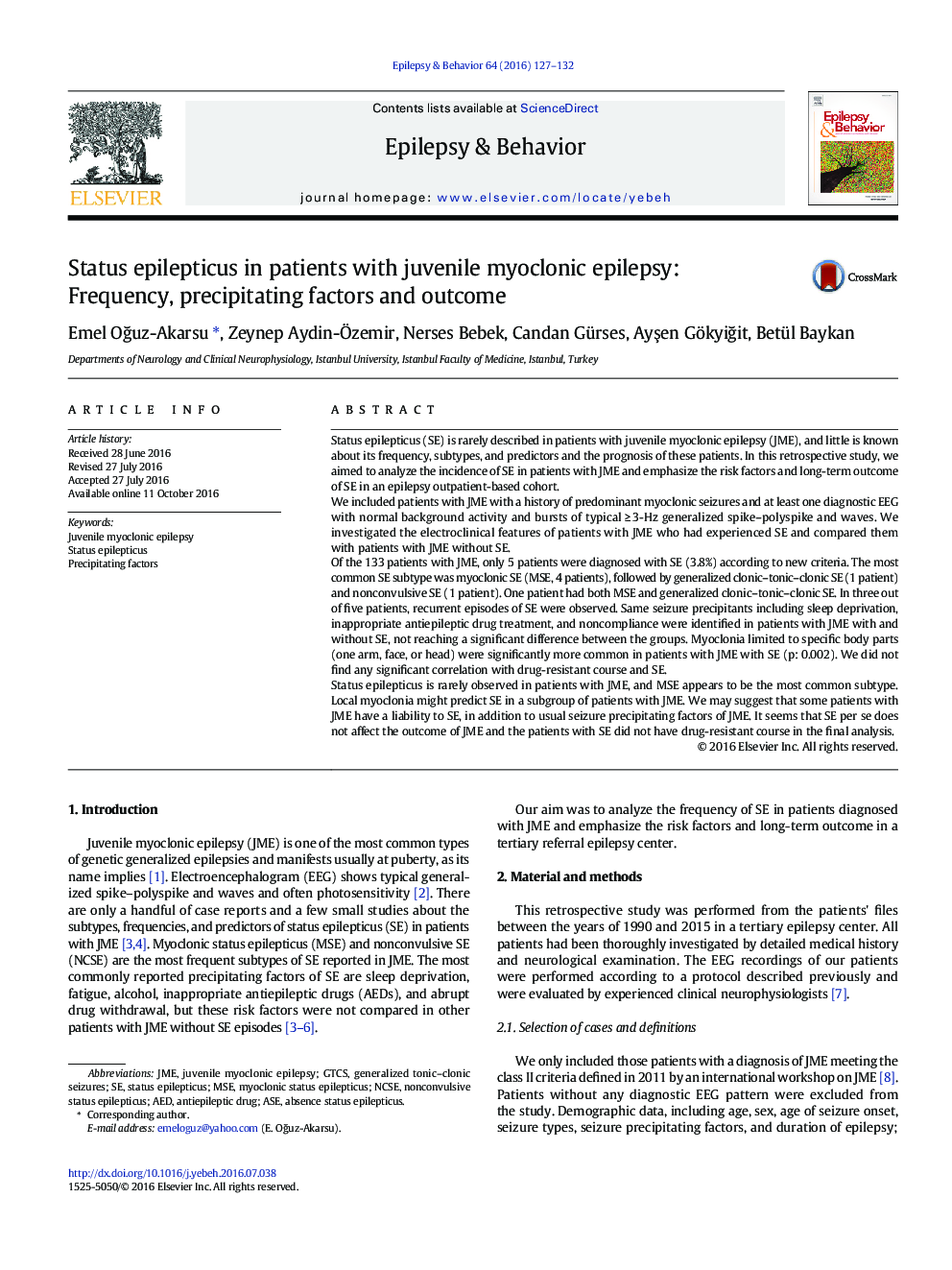| Article ID | Journal | Published Year | Pages | File Type |
|---|---|---|---|---|
| 5628094 | Epilepsy & Behavior | 2016 | 6 Pages |
â¢Status epilepticus occurs in 3,8 % of the patients with JME, mostly the myoclonic status epilepticus subtype.â¢Local myoclonia might predict status epilepticus in a subgroup of JME patients.â¢The JME patients with status epilepticus did not have a drug resistant course in the long-term follow-up.
Status epilepticus (SE) is rarely described in patients with juvenile myoclonic epilepsy (JME), and little is known about its frequency, subtypes, and predictors and the prognosis of these patients. In this retrospective study, we aimed to analyze the incidence of SE in patients with JME and emphasize the risk factors and long-term outcome of SE in an epilepsy outpatient-based cohort.We included patients with JME with a history of predominant myoclonic seizures and at least one diagnostic EEG with normal background activity and bursts of typical â¥Â 3-Hz generalized spike-polyspike and waves. We investigated the electroclinical features of patients with JME who had experienced SE and compared them with patients with JME without SE.Of the 133 patients with JME, only 5 patients were diagnosed with SE (3.8%) according to new criteria. The most common SE subtype was myoclonic SE (MSE, 4 patients), followed by generalized clonic-tonic-clonic SE (1 patient) and nonconvulsive SE (1 patient). One patient had both MSE and generalized clonic-tonic-clonic SE. In three out of five patients, recurrent episodes of SE were observed. Same seizure precipitants including sleep deprivation, inappropriate antiepileptic drug treatment, and noncompliance were identified in patients with JME with and without SE, not reaching a significant difference between the groups. Myoclonia limited to specific body parts (one arm, face, or head) were significantly more common in patients with JME with SE (p: 0.002). We did not find any significant correlation with drug-resistant course and SE.Status epilepticus is rarely observed in patients with JME, and MSE appears to be the most common subtype. Local myoclonia might predict SE in a subgroup of patients with JME. We may suggest that some patients with JME have a liability to SE, in addition to usual seizure precipitating factors of JME. It seems that SE per se does not affect the outcome of JME and the patients with SE did not have drug-resistant course in the final analysis.
